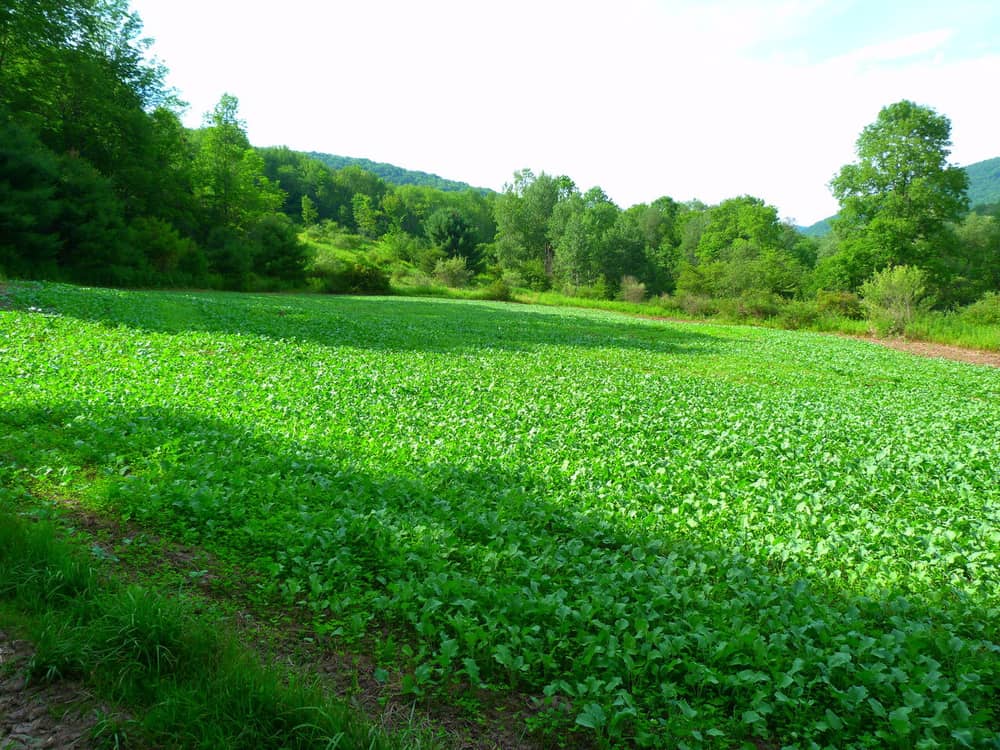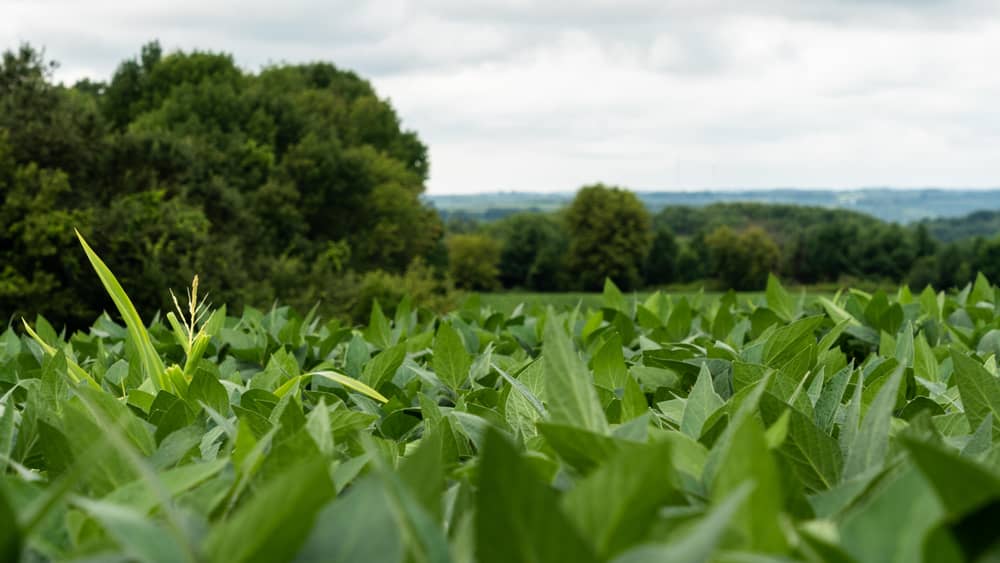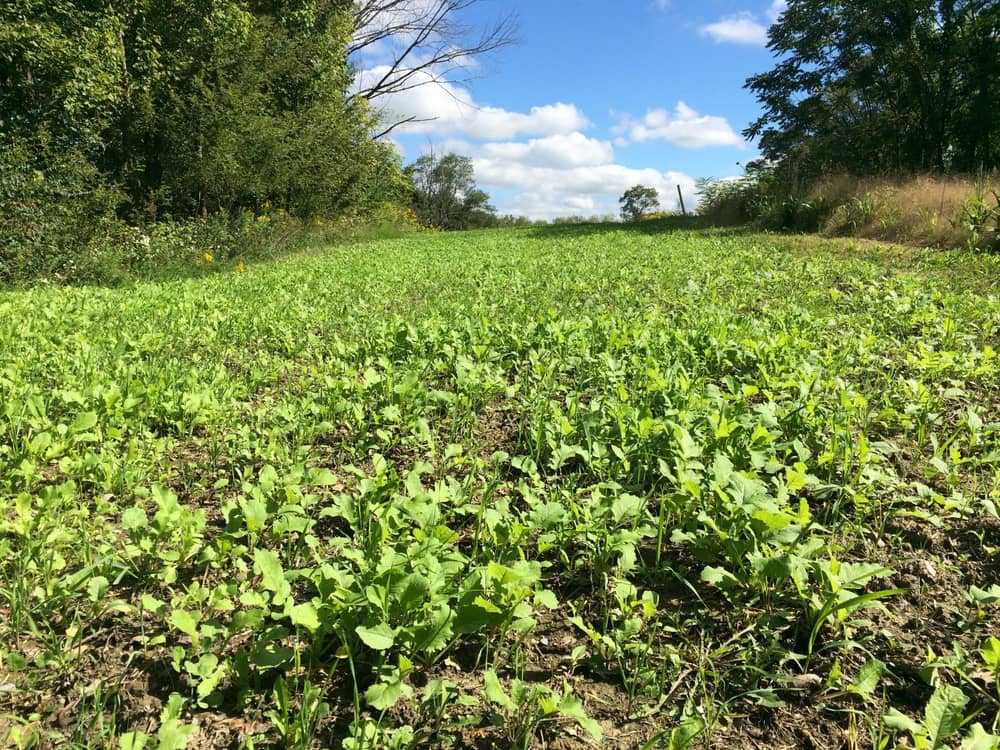There are a number of elements that affect the food plot seed’s capacity to endure dry conditions. Like other seeds, food plot seeds need moisture to germinate and develop a strong foundation for growth. How long can food plot seed go without rain?
The type of seed used, the soil’s properties, the temperature, and other environmental elements all play a significant role in how long food plot seeds may survive without rain. Generally speaking, as long as they are stored properly, the majority of food plot seeds may survive for a set amount of time without rain.
Legumes are an example of a seed with a strong outer shell that often has a longer shelf life and can resist dry spells better than more delicate seeds. Long-term dryness or a lack of moisture, however, can dramatically lower seed viability and restrict successful germination. For food plot seeds to grow and produce at their best, adequate rainfall or irrigation is essential. Let’s find out how long food plot seed can survive without rain.
Table of Contents
How Long Can Food Plot Seed Go Without Rain?

Various factors determine whether food plot seedlings can survive without rain. The particular seed kind, the surrounding circumstances, and the developmental stage are among them. Some seeds may fare better than others in dry spells. Water is necessary for seed germination and effective growth, it should be noted.
In general, moisture is necessary for the majority of food plot seeds to begin germination. Once the seed has absorbed water, biochemical processes are set off, which eventually result in the emergence of the embryonic plant. Seeds may stay dormant and not germinate if there is insufficient moisture.
Food plot seeds can survive without rain for a variety of lengths of time. Some seeds have a higher tolerance for drought, especially those with hard coatings like legumes and some grasses. These seeds can live longer periods without rain since they are frequently made to endure extreme climatic conditions. They have developed defenses against desiccation and the ability to survive periods of drought.
Even seeds with a higher tolerance for drought have limitations. Insufficient germination and reduced seed viability can result in poor establishment and growth during prolonged dry spells.
What Should I Do To Help Food Plot Seed Go Without Rain?
There are various things you may do to aid food plot seeds in surviving and flourishing when it doesn’t rain:
Select The Right Seed Types
Pick seed types that are adapted to your region’s climate and have a higher tolerance for drought. Look for seeds that can survive in arid environments and have a greater possibility of germination and growth under dry conditions.
Prepare The Soil
Ensure that the soil is properly prepared before planting. The ability of the soil to hold moisture for longer periods of time is improved by proper soil preparation. To strengthen the soil’s structure and increase its ability to hold water, add organic matter to it, such as compost or well-rotted manure.
Timing Of Planting
Take into account when to plant your food plot seeds. Schedule your planting to take place during a time when rain is most likely to fall. This raises the possibility that the seeds will get enough moisture to germination and early growth.
Mulching
Around the planted area, spread a layer of organic mulch, such as straw or wood chips. By lowering evaporation, maintaining cooler soil temperatures, and shielding seedlings from sharp temperature changes, mulching aids in the retention of soil moisture. Additionally, it aids in weed control because weeds can compete with food plot plants for water.
Irrigation
Supplemental irrigation becomes essential when rainfall is limited or missing for a lengthy period of time. To supply routine irrigation, think about establishing an irrigation system. Particularly drip irrigation is effective because it reduces water waste by delivering water straight to the root zone of plants.
Water Conservation Practices
Utilize water-saving techniques to make the best use of the supply. This entails employing water-saving strategies like drip irrigation or soaker hoses, watering during cooler times of the day to lessen evaporation, and avoiding over watering to prevent water runoff.
Monitor And Adjust
Keep a close eye on the overall health of the plants as well as the soil’s moisture content. Depending on the particular requirements of the food plot and the current weather, adjust your watering plan. Be aware of potential drought stress indicators, such as drooping or yellowing leaves, and take appropriate action.
You can assist food plot seeds survive dry spells and improve their chances of effective germination and growth by adhering to these procedures.
How Does Rain Help The Seed?

Rain is essential for promoting seed germination and subsequent plant growth. Here are a few ways rain benefits seeds:
Seed Activation
The activation phase for seeds is started by rainwater. A seed begins to rehydrate and activate biochemical processes when it takes in water, which marks the beginning of germination. The seed coat becomes softer when exposed to water, allowing the embryo inside to enlarge and push through the seed’s defenses.
Water Absorption
To absorb nutrients and other crucial components from the soil, seeds need water. The seeds may directly access water from rain, which they can absorb through their outer layers. The seed can start metabolic processes and activate enzymes as a result of this water intake.
Nutrient Availability
Rainwater transports dissolved nutrients from the environment and the atmosphere. These nutrients are made available to the seed that is germination when it permeates the soil. For the seedling’s early growth and the plant’s subsequent development, there must be an adequate supply of nutrients.
Soil Moisture
Rain aids in preserving the soil’s moisture content, which is necessary for seed germination. The condition required for the seed to absorb water and for the root to emerge is moist soil. Additionally, adequate soil moisture encourages nutrient uptake and permits root system growth.
Temperature Regulation
The temperature of the soil and the air can be regulated by rain. Rain can bring comfort in hot, dry weather by cooling the soil and improving the atmosphere for seed germination. The metabolic processes taking place inside the seed benefit from moderate temperatures.
Erosion Prevention
In order to avoid loose soil and debris from obscuring the seeds, heavy rainfall might wash them away. As a result, successful germination and establishment of the seeds is encouraged because the seeds are in direct contact with the soil.
Continued Growth Support
Rainwater provides the plant with the energy it needs to continue growing and developing after the seed has germinated and the seedling has emerged. It offers a reliable source of moisture, promoting leaf growth, the delivery of nutrients, and general plant health.
Final Thoughts
In conclusion, different seed types and environmental circumstances can affect how long food plot seeds can survive without rain. Choose drought-tolerant seed varieties and properly prepare the soil to help food plot seeds withstand dry spells. The likelihood of creating successful food plots for agriculture or animals is increased by being aware of the constraints and taking the right action.

